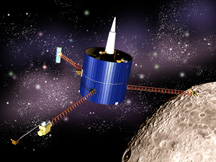To the Moon!
News story originally written on December 9, 1997
The first NASA lunar mission in 25 years will be launched on January 5, 1998. The spacecraft's name is the Prospector. While the Prospector orbits the Moon, it will make complete maps of the lunar surface. There is no landing involved in this mission!
The Lunar Prospector's mission will be an exciting one. Scientists are looking forward to having complete maps of the surface. They are also excited to find out if there is ice buried at the poles of the Moon. If there is, a lunar base located on the Moon will be much more feasible (water would be very hard/expensive to transport to the Moon!).
The Lunar Prospector's mission is expected to last one year. The craft is 4.5 feet high by 4 feet in diameter. It is shaped like a big drum!
Data from this mission will help scientists plan a potential lunar base and develop theories of the formation of the solar system.
You might also be interested in:
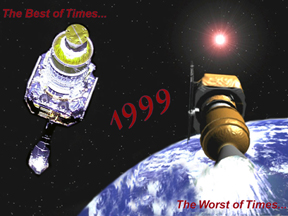
It was another exciting and frustrating year for the space science program. It seemed that every step forward led to one backwards. Either way, NASA led the way to a great century of discovery. Unfortunately,
...more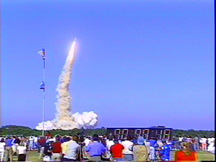
The Space Shuttle Discovery lifted off from Kennedy Space Center on October 29th at 2:19 p.m. EST. The weather was great as Discovery took 8 1/2 minutes to reach orbit. This was the United States' 123rd
...more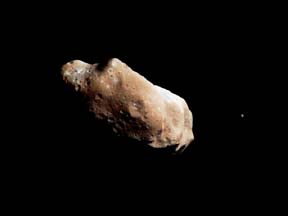
A moon was discovered orbiting the asteroid, Eugenia. This is only the second time in history that a satellite has been seen circling an asteroid. A special mirror allowed scientists to find the moon
...more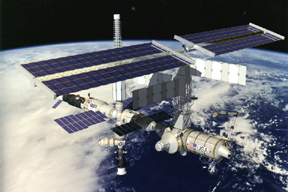
Will Russia ever put the service module for the International Space Station in space? NASA officials want an answer from the Russian government. The necessary service module is currently waiting to be
...more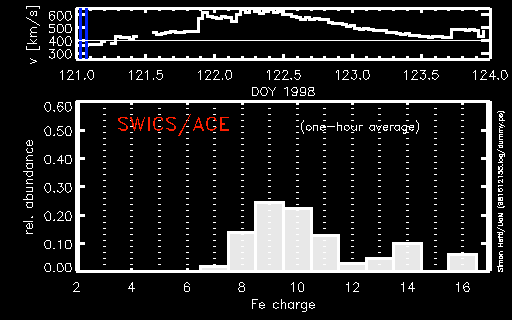
A coronal mass ejection (CME) happened on the Sun early last month. The material that was thrown out from this explosion passed the ACE spacecraft. The SWICS instrument on ACE has produced a new and very
...more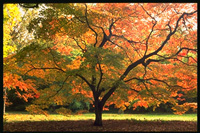
J.S. Maini of the Canadian Forest Service called forests the "heart and lungs of the world." This is because forests filter air and water pollution, absorb carbon dioxide, release oxygen, and maintain
...more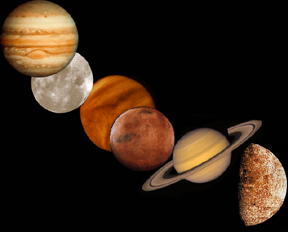
In late April through mid-May 2002, all five naked-eye planets are visible at the same time in the night sky! This is includes Mercury which is generally very hard to see. You won't want to miss this!
...more


